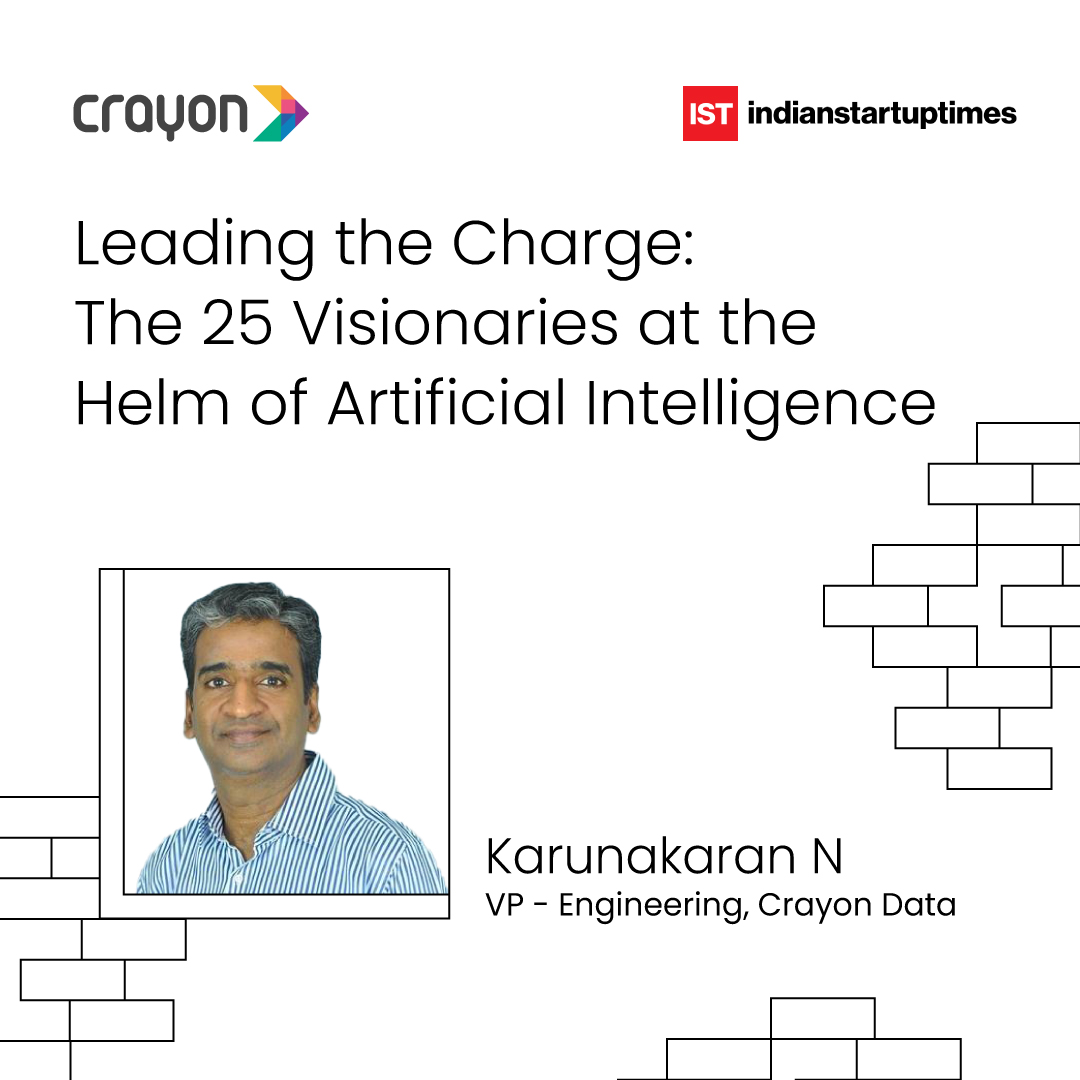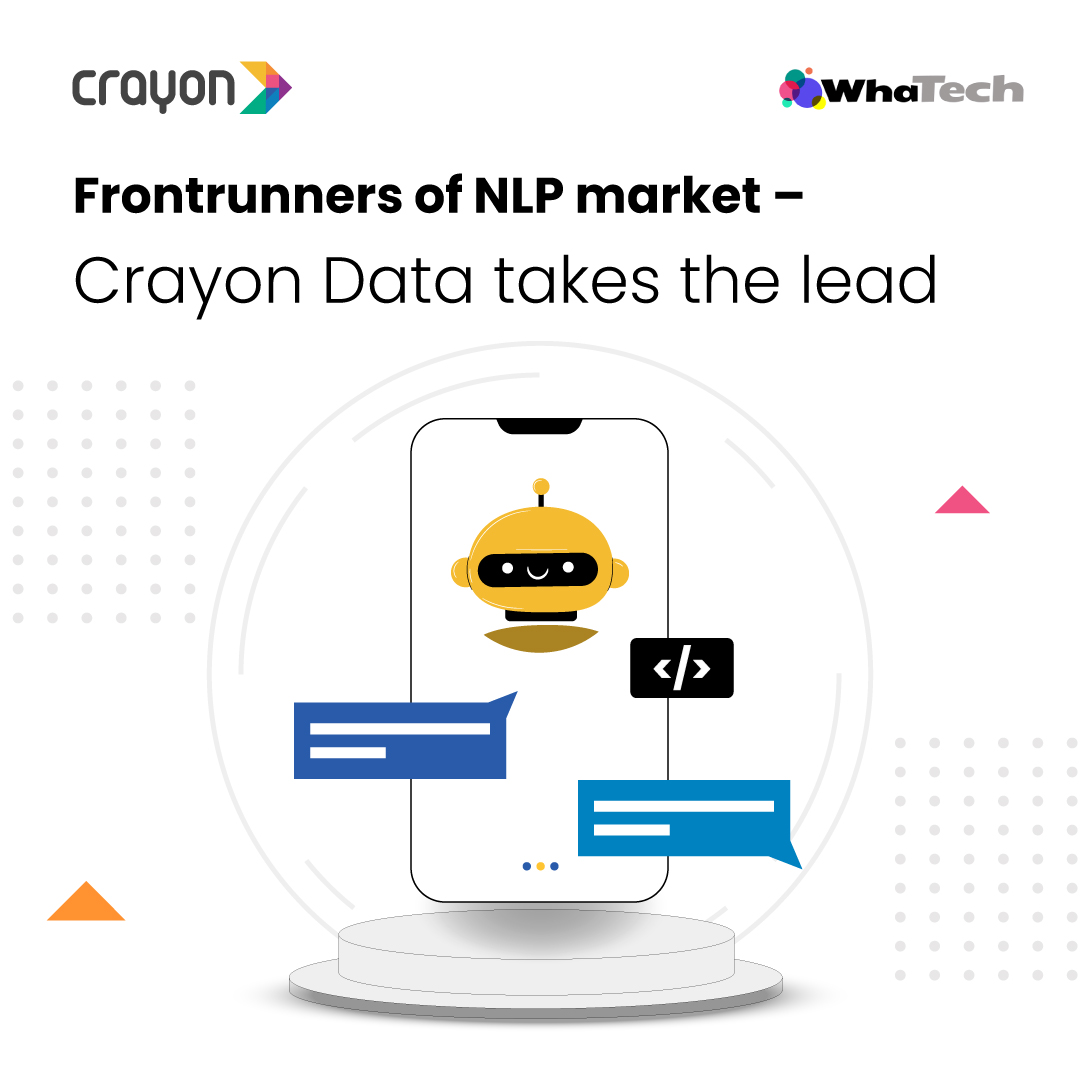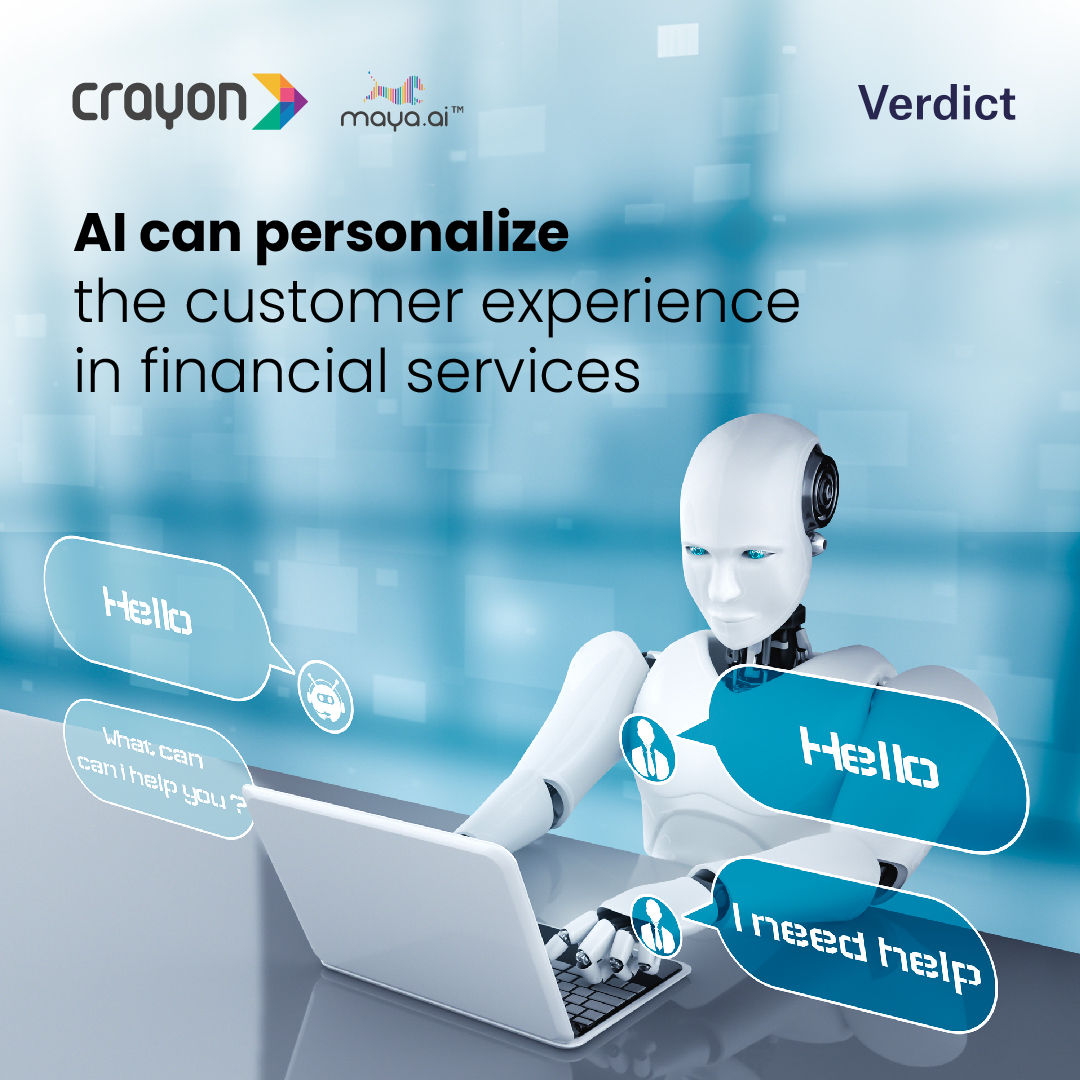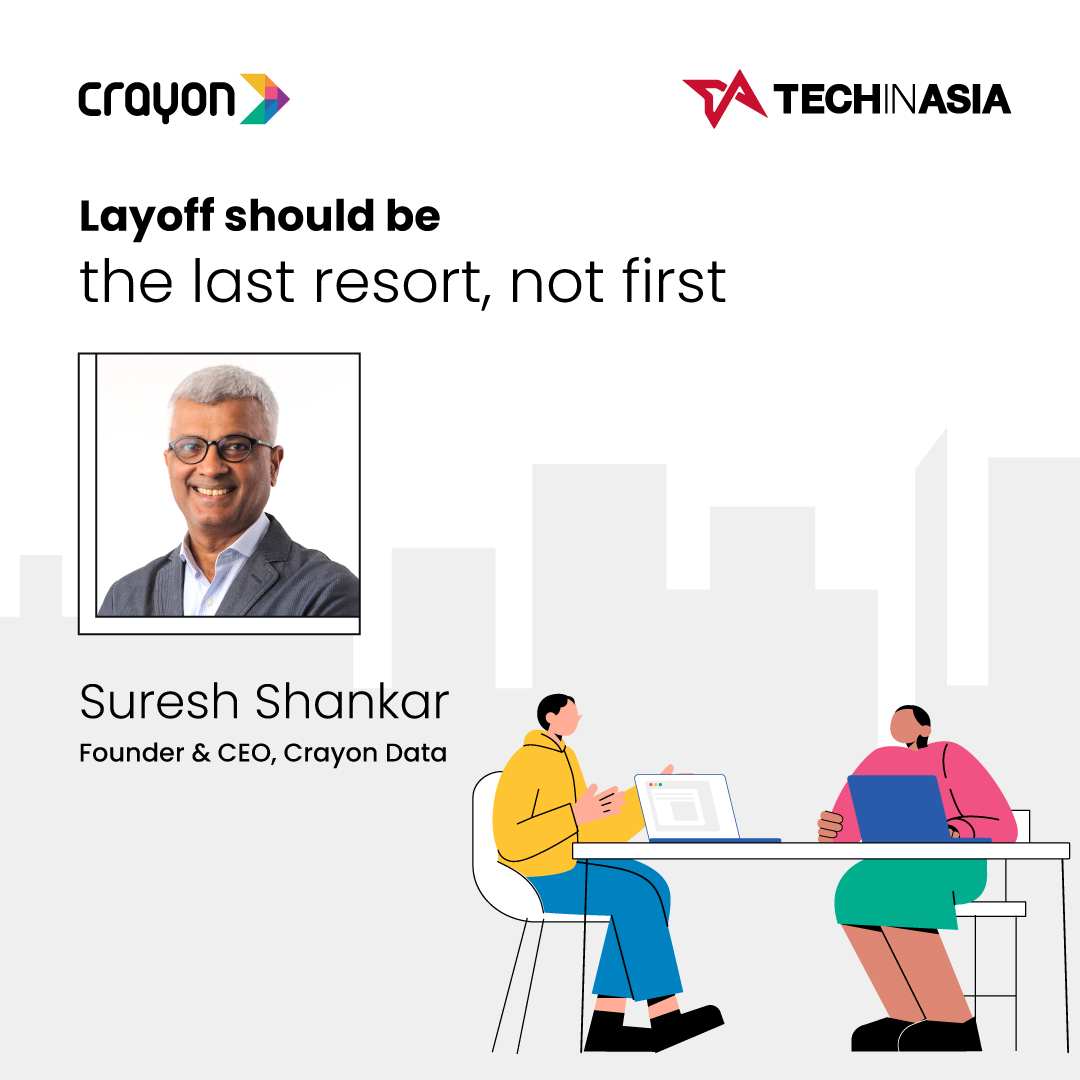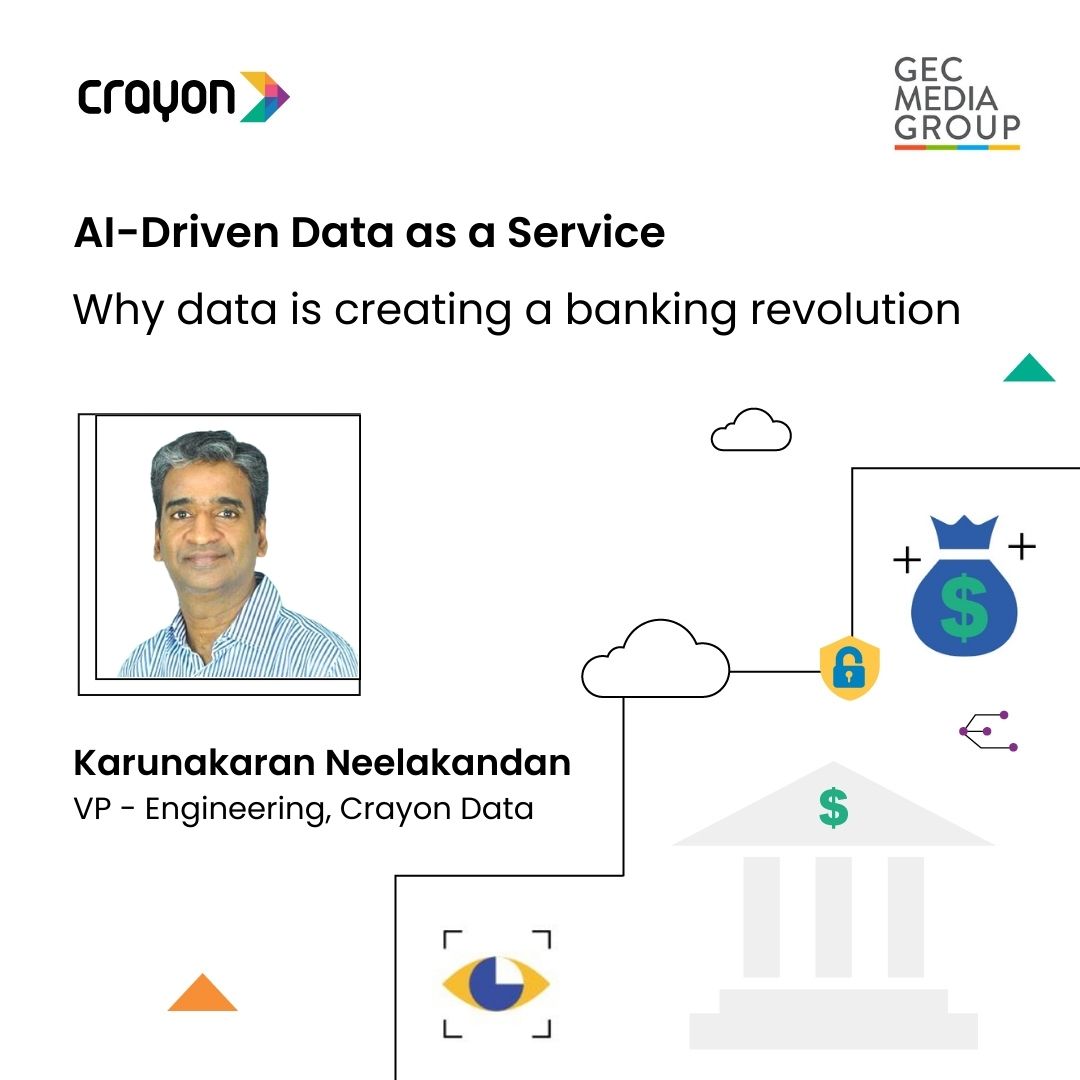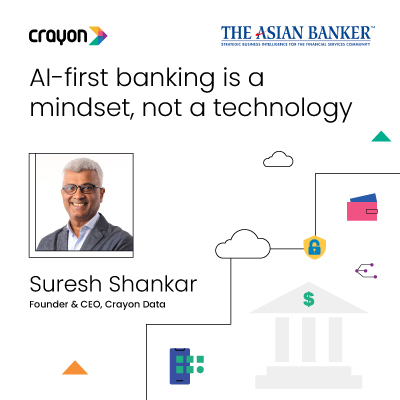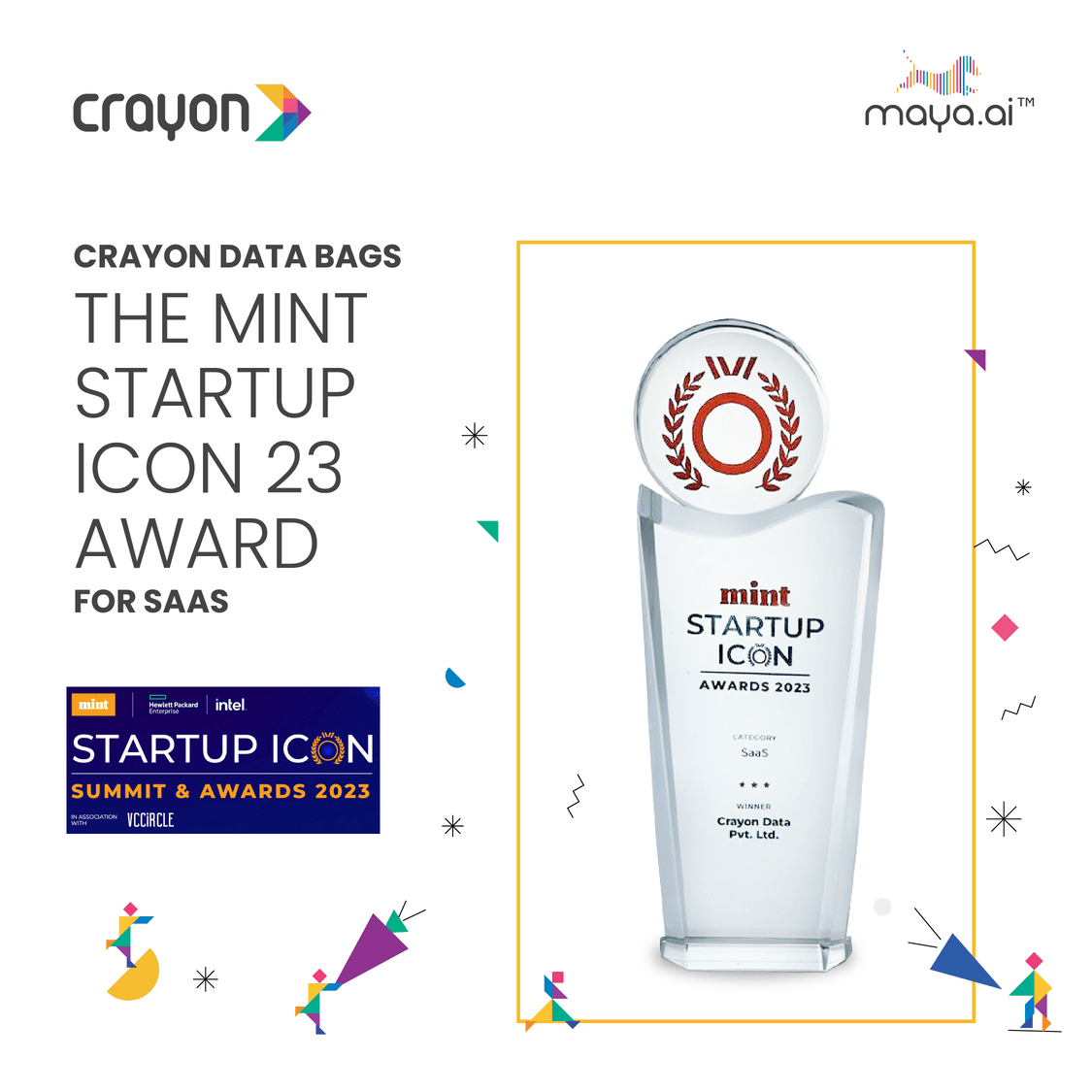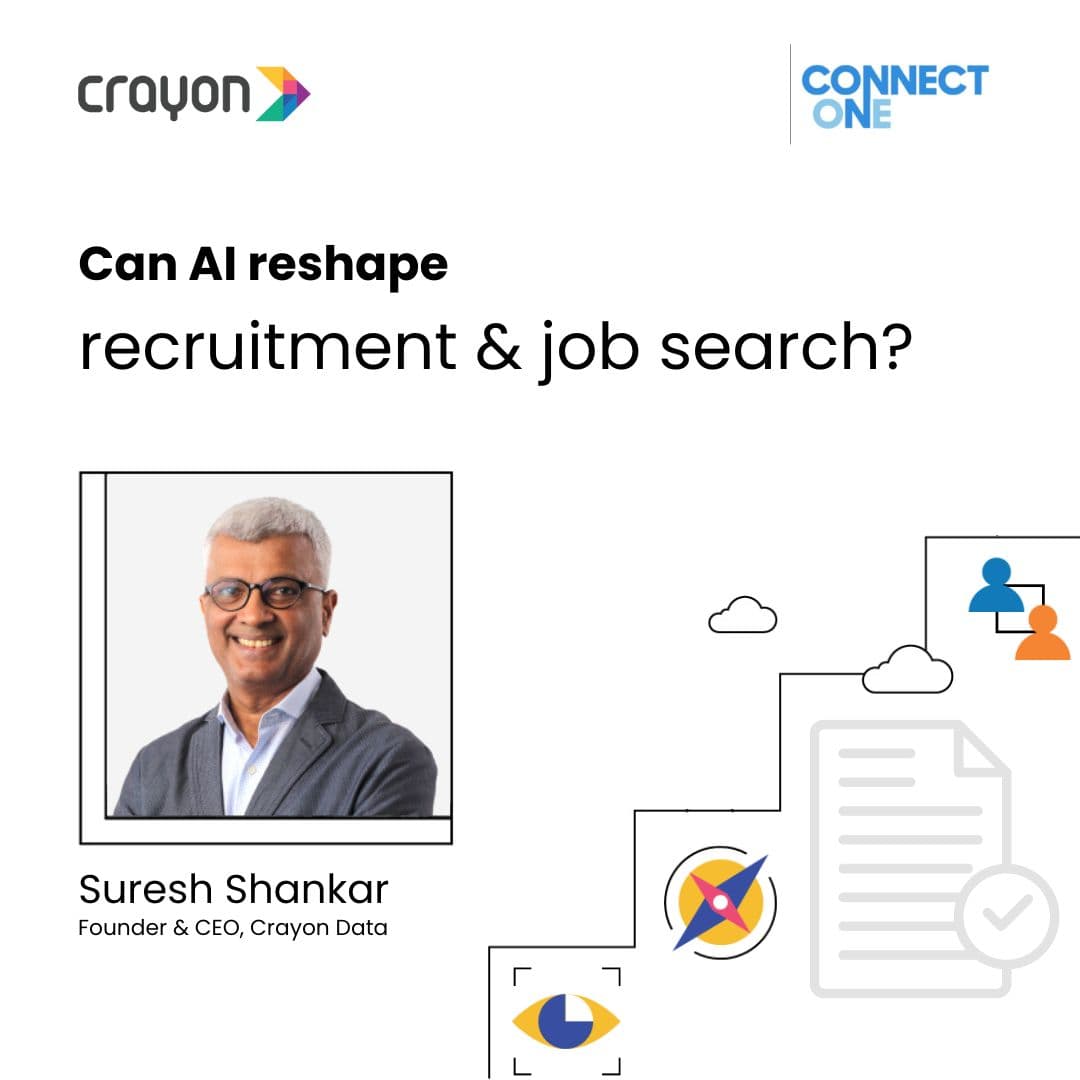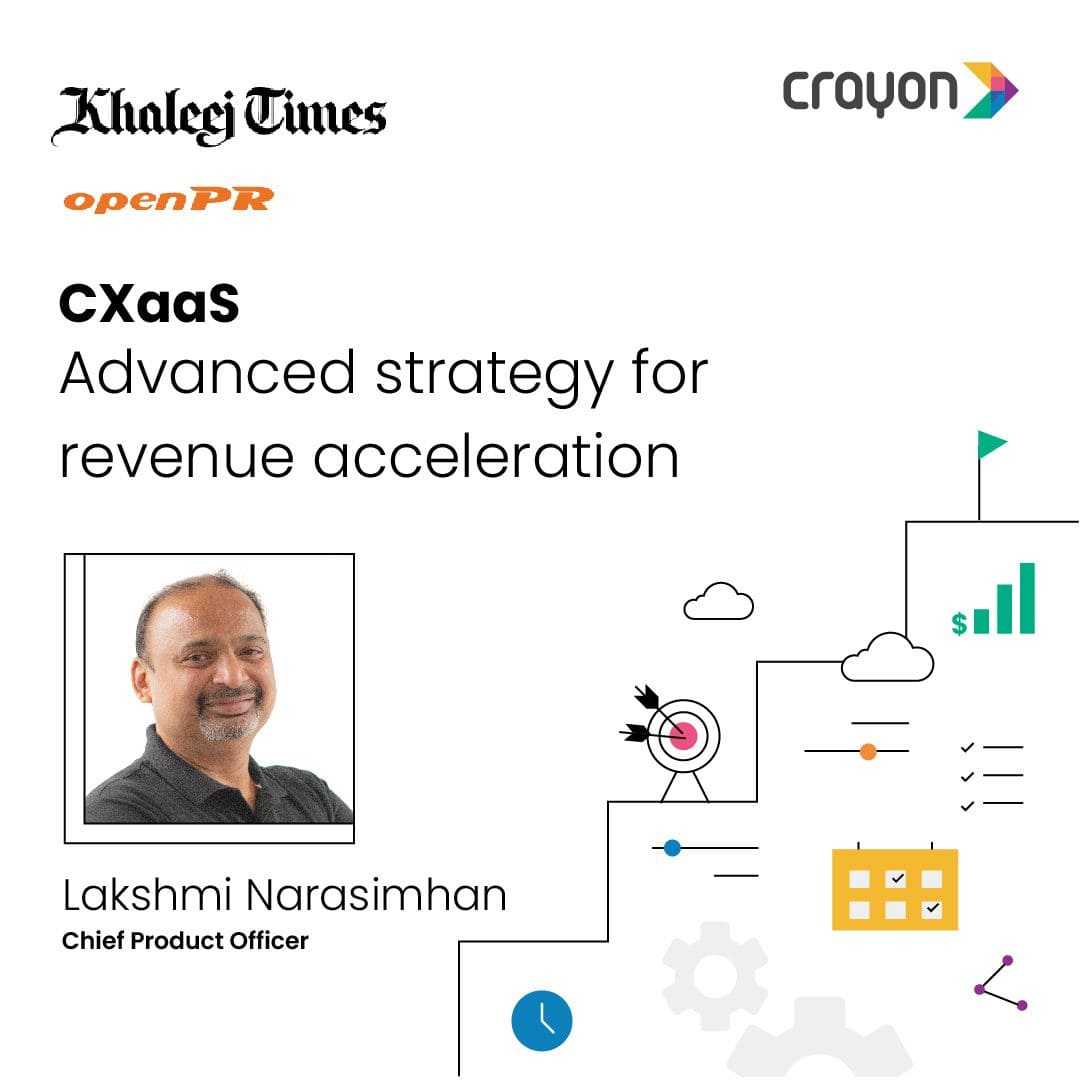uresh Shankar is the Founder Director at Crayon Data. Prior to founding Crayon Data he held various positions at IBM, RedPill Solutions, ANN AMRO Bank, Young & Rubicon and JWT Fulcrum. He was the CEO at RedPill which was sold to IBM in 2009. Srikant Sastri is another serial entrepreneur and seasons executive who joined the founding team at Crayon Data. He has held varying positions at Team4U, Vivaki, an Growth-For-All before founding Crayon Data.
Sramana: Before we delve into the story of Crayon Data I would like to get a sense of your backgrounds. Suresh, why don’t you go first.
Suresh Shankar: I was born in Chennai and grew up with a proper middle class background. My father was a lawyer and education was everything. My father also encouraged me to play a lot of cricket which was a lot of fun growing up. When I began looking at college choices I took the easy way out. I knew that I wanted to do an MBA eventually, so I figured I should start out with business studies for three years before my MBA instead of five years of engineering school. I ended up going to IIM Calcutta which is where I met Srikant. He ended up taking all of the notes while I skipped class and took all of his notes.
I had always wanted to be in sales and marketing. After I got out of college in 1985 I spent some time front end sales, and then I went into product management and marketing. From there I went to advertising. To some extend I think my future was shaped by that progression. I worked on a team that helped Citibank launch a credit card business followed by the launch ofCitiPhone Banking in India. I grew up to be the national account director for that business which was a fascinating learning experience for me. The services sector did not exist in India before Citibank. From 1989 to 1995 there was a tremendous amount of learning around direct marketing and technology to grow a business.
I then moved on to set up the first media buying company in India. Now you have a few but none of them existed in 1995. It was the first country in the world where we won the Unilever business for consolidated media buying. Not only was Unileverthe largest media spender by a factor of many miles in those days, but I think it was a creation of an entire industry of media buying on that scale. We literally had to put in place a lot of the systems and business models necessary to make that successful.
After a few years I moved to Singapore for purely personal reasons. In 1997 I joined Young & Rubicam and coincidentally a week after I joined Citibank shifted their accounts to Young & Rubicam. I claim it had everything to do with me but in reality it was just a happy coincidence and had nothing to do with me. I went on to be the account director for that account and I worked on the launch of Internet banking in Asia.
Sramana: Srikant, what is your background?
Srikant Sastri: When I was young I studied every possible subject in Hindi. Aside from math and science, which have an English influence, all of my other studies such as history, civics, and geography where all in Hindi. English is not a native language for me. I grew up in a small town, and when I was 10 years old I really started to have the desire to do something on my own. My father worked for a typical Indian company, which was a family-owned business. One of my earliest recollections was that of people like my father, who were highly qualified, were put in roles below family members and others who were far less qualified. That always intrigued me and puzzled me, and I instinctively knew that I would never follow that path. That led me to the conclusion that I would always work for myself and never anyone else. That is where my entrepreneurial desires come from.
After school I went to IIT, and after graduation I saw 90% of my class take off to the US. My parents put a lot of pressure on me because the US is where all the action is, and the standard of living is better. I had scholarship opportunities in India but I refused to go. I stayed in India because I had the desire to do something on my own. In the early 1980s the culture was different. There were not many things you could do on your own.
As an engineer, one of my few options was to set up a small manufacturing business. I went through the motions of trying to obtain the certification to set up a small-scale industry. My refusal to go to the US really set me on the next phase of my development. My interest in sales and marketing began at that time. I became convinced that whatever I would do for a business would be centered on marketing and sales. From the entire period of schooling, from IIT to IIM, it has been a story of the dots getting connected and my instincts being validated.
After IIM I knew I was took much of a rookie to go out and set up something on my own, plus I lacked the capital to do that. I thought it would take me five years to set up something, but it took me ten and even then it only happened because of some lucky breaks. I used to work for a lady who was nearing her retirement. She asked me to run one of her businesses and she gave me a 20% take. That is how I first became an entrepreneur. When she retired, I realized that I did not want to do that so I walked out with 30 people from my previous company, withdrew my entire family pool of savings, sold my car, withdrew my retirement fund and set out to open a business in six cities across India. I basically started with $30,000 and 30 employees. In hindsight it was foolish, but when I look back it was a burst of energy.
Sramana: Srikant, what was the premise of the business that you were looking to start?
Srikant Sastri: I still carry copies of the formal business plan I wrote at that time. It was 1995, and the early signs of the technology boom in India was there. Telecom was present and IT was starting to flutter. The business plan was based on the premise that IT, telecom, and electronic media would have a convergence in India.
Many multinationals would want to enter India, so we intended to be a service provider to multinationals in text and multimedia with respect to India market entry. We were a marketing services provider, and our first five clients were Microsoft, HP, Cisco, The Discovery Channel, and Motorola.
Sramana: That is a good client list for a startup and a first-time entrepreneur. How did you get clients of that magnitude?
Srikant Sastri: It was partly by design and partly by luck. I worked on the business plan for a year, and I had built up some relationships during my work at previous companies. The IIT network was great for me as well. We were also lucky, and I wish we had not been so lucky. The first year was too easy and it made us all too cocky. We felt that entrepreneurship and setting up a business were a walk in the park. We started investing heavily into infrastructure, and then we had a disastrous second year. It came down to my last penny.
Sramana: Where were you based?
Srikant Sastri: I have been in Delhi for 27 years. Our business was across India. If you are going to be a marketing service provider, then you have to have a national footprint. We set up six offices on day one. Eventually we also set up an office in Singapore and other places in India, with the goal of being an Asian marketing provider.
Sramana: What happened after you ran out of money in year two?
Srikant Sastri: There were several events that shaped that period. When I ran out of money, there were vendors who came and held me by my collar in my office, demanding that we pay. Second, a couple of vendors had lawsuits against us demanding that we pay what we owed them. The third abiding image I have is that I would drive my own small car, and I had five credit cards that were maxed out. There was one particular day when I had 10 rupees in my wallet, all five cards were maxed out, and my car was running out of gas. I was not sure if my car or my money was going to run out first.
After the second year we really focused on our business and what we needed to do. In 2008 the economy and the IT industry started looking up, and therefore the worst period was over. What happened in 1999 and 2000 was that thanks to my brother-in-law, we raised about $500,000 of angel funding, and that money was key to our success, or we never would have made it through that period.
Sramana: It sounds like this dose of reality was good for your soul. It helped you get back down to the ground.
Srikant Sastri: Absolutely. That is why as Suresh and I set up our business, today I play the role of the background voice reminding us of the need to preserve our cash. That dose of reality has never left me.
Sramana: Where did things go with that company?
Srikant Sastri: It was a marketing services company, and by 2005 it had become the largest such company in India. We had 3,000 people at Solutions Integrated Marketing. It was in India and Southeast Asia. In 2005, for a variety of reasons, I decided that it was important to bring on a strategic financial partner. I really wanted to focus on global expansion, so I took a global trip and met all of the global marketing holding companies. I met with nine of them, and Suresh was very helpful in introducing me to some of them. We sold a 60% stake in 2005. By 2010 they had bought out the remaining percentage of the company.
In 2004 we had established a second company as a spinoff. It was a staffing company. We would provide sales teams on contractual basis to the same large multinationals. Between 2004 and 2007 we had 15,000 salespeople contracted out to our major clients. In 2007 we sold that company to a Dutch company. We existed that business completely. As a result, I have had two businesses which I have built and exited completely.
Sramana: Suresh, let’s go back and talk some about what your moves were. You had gone through a corporate career path and had enjoyed some success. How did you move into the entrepreneurial path?
Suresh Shankar: I started off with marketing as a right-brain, creative career path. I loved advertising and brands, but I realized in all of my work that there was a lot of data being used. The marketing world was moving towards left-brain, data-driven analytics.
I can’t say that my first step into entrepreneurship was entirely planed. I was supposed to join a big startup as the COO during the height of the dot-com boom. I quit my big job, and unfortunately in the fifteen days between quitting and starting my new job, we had a dot-com bust and my new job never actually materialized.
Getting a job was not going to be a problem, but during the down time I had the opportunity to reflect on the state of the market. That made me realize there was opportunity to do some things differently and that led me to my first startup, RedPill. That was my analytics consulting firm.
Sramana: Throughout all of this the two of you stayed in touch. How was that?
Srikant Sastri: When I set up my Singapore office in 2002, Suresh was a bachelor and I had a key to his pad. I would see him every month. When I started my business, Suresh started RedPill. We kept in regular contact in that manner.
Sramana: When did IBM buy out RedPill and what was the reason behind that acquisition?
Suresh Shankar: In late 2008 they came calling because they were looking for an analytical play. It was a rigorous buyout process and that was a question I kept asking them. They were interested in our high end analytical work. We created value out of data. The work we were doing was something that not a lot of people in IBM were doing.
Sramana: I cover IBM on a quarterly basis and I follow their acquisition strategy closely. They acquire for technology or geography. I think you were at the cusp of both. When you talk about high end predictive work, what specifically were you doing?
Suresh Shankar: We would look at an entire banks customer lifecycle and build out models to tell them what types of customers they should acquire. The whole idea was to look at data and analysis from a different perspective. Even if you exclude the quality of the data, you will find that it is not biased. That is why we could build models for acquisition, churn and other key business processes.
Sramana: You delivered this solution on a service basis, correct?
Suresh Shankar: The models were ours, but yes we did a lot of services. That is actually something that we are trying to do differently this time. We did some work for a telecom and we ended up actually helped them do a month to month churn reduction which saved them 30 million dollars. We made one of our banking customers 80 million dollars of revenue the very first year we worked with them. They got a 90x ROI on the work that we did for them.
The kind of work we did was extremely quantifiable. We could sit down and identify the number of people we targeted, and what the results of that targeted campaign were. We could identify how much money was made from that customer and when it was made. I find all of this a bit funny. I avoided math on my journey through college. I did not do very well at statistics and today that is all we do.
Sramana: You sound like someone who has an affinity for math and statistics.
Suresh Shankar: It was hard. At school I was one of the people who sat in the back row. I do love the usage of math but I have never been that good at sitting down and doing it. I can read an Excel sheet easily, but I probably am not the person that is going to make them. I am not a mathametician.
Sramana: The ability to look at data and synthesize it is very much a skill that is missing.
Suresh Shankar: I could not agree with you more. We do need right brained people and that is my strength.
Sramana: When did you start Crayon Data?
Suresh Shankar: We formed the company in 2012. In reality we have only been functioning since October. That is when we moved into a real business and started to hire people. We are coming out now and we are talking to people now. We have made good progress in the products.
Sramana: Did you fund the company yourselves or did you go raise money?
Suresh Shankar:
Srikant Sastri: We started by self funding but we did raise some money as well. We have not raised institutional angel money, but we have taken loans from individuals. We have individuals that we have worked with in the past as well as some family members, and these are all people that believe in us.
Sramana: You guys have both had substantial exists and I am sure you have enough cash to fund this yourselves. Why did you take outside money?
Srikant Sastri: Our outside money is from family and close friends. We did that because with our previous companies we made sure that a lot of people who loaned money to us and supported us made money. We were indebted to them. We believe that people who believe in us should make money.
You are absolutely right in saying that the amount of angel money we have raised so far could have been covered by our own investments. I think that the relationships that those people bring have a much more significant value.
Sramana: So these are people who you look at as strategic investors? Will you rely on them for client relationships or other strategic factors?
Suresh Shankar: Absolutely. They are not just money.
Sramana: What about the premise of what you have started with? What is the product definition process that you have started with?
Suresh Shankar: Our earlier companies were services based companies and we thought we had some options to build aproduct focused company. In our world a lot of very smart people look at the past and try to determine what to do with the future. In our services plays the only way to scale was to hire more and more people.
Our entire premise was to combine the internal data of the enterprise with external data. Typically those two datasets have had different focuses. People used to look at social media from the perspective of what they knew about the consumer. That does provide very good broad, cross category, knowledge. However, the groups in an enterprise would likely only consider a very narrow part of that data for their needs. We thought about the idea that human minds process that much data and that this was not going to work.
What we need to develop is a predictive model. We need to be able to tell people what the most likely things are to happen. We need to tell them what their choices are and what the likely outcomes of those choices are. That fundamentally changes the enterprise dynamics.
Sramana: Who were your early adopter customers and what is it that made them converge to you? How did you clinch those deals?
Suresh Shankar: Essentially we are building a choice engine in a way that gives you multiple ways to apply it to your needs. In one case we have been working with a very large hotel company in the UK. They really don’t understand what type of customer comes and makes a booking at their hotel. They don’t know what the customers purpose is or what kind of influence the customer has. Now, every time the booking happens at the hotel we are able to go out into the larger world and try and understand that customer through larger social media datasets of similar people. We are able to build a larger profile of the customer references. They can then reach out to customers and provide personalized services better even before that person walks into the hotel.
Banks have a good play here as well. If you have a private relationship with a bank there is not a lot of behavior data about that one customer at the bank, especially if they are new to the bank. There is a lot of information available about that type of customer outside of the bank. We can use that data to suggest choices to that customer out of the millions of financial instruments available.
We are also doing some work with a large global payments company that wants to expand its footprint in Asia. They know the types of people who would typically sign up for their payment processes, but they needed to find 50,000 of them in the world. How can they find those people? In the past they would try to buy lists from local providers. We are able to look at the enterprise layer to find out what kinds of customers are good for them and then match that profile against public sources of information. We were able to give that customer a list of highly refined profiles of potential customers.
Sramana: I think you have a layer of your algorithms, models, infrastructure, and frameworks, that are horizontal. It seems like you can apply that to every single vertical. I strongly recommend that if your goal is to build a product company that you should build vertical by vertical and not try to do so many of them at once. As you start developing heuristics and business processes that are domain specific you will find that it is custom to the vertical. You need to leverage that work over and over again.
Suresh Shankar: That is extremely good advice. It is good to learn from other peoples experiences. I have heard that from several different people. We believe that ultimately you are right. We also believe we are going to have to use a lot of different business partners who will build verticalized applications for their industry. This year is a learning year for us. We are building across categories and we want to understand different types of enterprise data sets. We need to look at multiple types of data to further develop out the base platform.
Sramana: If your focus is to operate at the horizontal layer and to recruit a set of partners to handle the verticals then you will likely have success. Marketing to the various verticals is a complicated task.
Srikant Sastri: This is a live debate that we are going through all the time. We are always debating the number of verticals that we should be engaged with at any one time.
Sramana: Good luck with Crayon Data. Keep me posted with how it evolves!

Crayon Data on Financial Times ‘ High-Growth Companies Asia-Pacific 2024 list
Date:...


